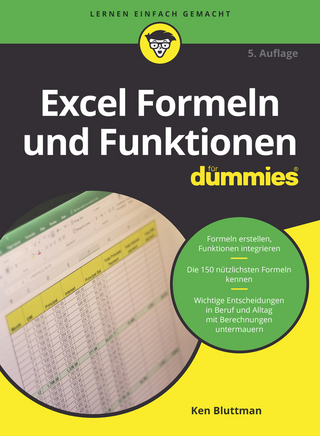
Excel in Complex Variables with the Complex Variable Boundary Element Method
WIT Press (Verlag)
978-1-78466-451-0 (ISBN)
Using the familiar software Microsoft ® Excel, this book examines the applications of complex variables. Implementation of the included problems in Excel eliminates the “black box” nature of more advanced computer software and programming languages and therefore the reader has the chance to become more familiar with the underlying mathematics of the complex variable problems.
This book consists of two parts. In Part I, several topics are covered that one would expect to find in an introductory text on complex variables. These topics include an overview of complex numbers, functions of a complex variable, and the Cauchy integral formula. In particular, attention is given to the study of analytic complex variable functions. This attention is warranted because of the property that the real and imaginary parts of an analytic complex variable function can be used to solve the Laplace partial differential equation (PDE). Laplace's equation is ubiquitous throughout science and engineering as it can be used to model the steady-state conditions of several important transport processes including heat transfer, soil-water flow, electrostatics, and ideal fluid flow, among others.
In Part II, a specialty application of complex variables known as the Complex Variable Boundary Element Method (CVBEM) is examined. CVBEM is a numerical method used for solving boundary value problems governed by Laplace's equation. This part contains a detailed description of the CVBEM and a guide through each step of constructing two CVBEM programs in Excel. The writing of these programs is the culminating event of the book.
Students of complex variables and anyone with interest in a novel method for approximating potential functions using the principles of complex variables are the intended audience for this book. The Microsoft Excel applications (including simple programs as well as the CVBEM program) covered will also be of interest in the industry, as these programs are accessible to anybody with Microsoft Office.
Introduction to complex variables
Complex numbers - Arithmetic operations; Algebraic properties; Geometric interpretation
Functions of a complex variable - Visualizing complex variable functions; Linear transformations and mappings; Analytic functions; Taylor series representation; Complex functions
Contour integration - Open contour; Simple, closed contour; The Cauchy integral formula
The complex variable boundary element method and Excel
Foundations of the CVBEM - Analytic solutions of Laplace’s equation and related PDEs; Introduction to the CVBEM; CVBEM basis functions; Numerical implementation of the CVBEM; Computational error estimation
CVBEM implementation in Excel - Implementation; Potential flow in a 90-degree bend; Potential flow over a cylindrical obstacle
Bibliography; List of figures; List of tables; Index
| Erscheinungsdatum | 01.07.2021 |
|---|---|
| Verlagsort | Southampton |
| Sprache | englisch |
| Maße | 178 x 254 mm |
| Themenwelt | Informatik ► Office Programme ► Excel |
| Mathematik / Informatik ► Mathematik ► Analysis | |
| Mathematik / Informatik ► Mathematik ► Angewandte Mathematik | |
| ISBN-10 | 1-78466-451-0 / 1784664510 |
| ISBN-13 | 978-1-78466-451-0 / 9781784664510 |
| Zustand | Neuware |
| Haben Sie eine Frage zum Produkt? |
aus dem Bereich


